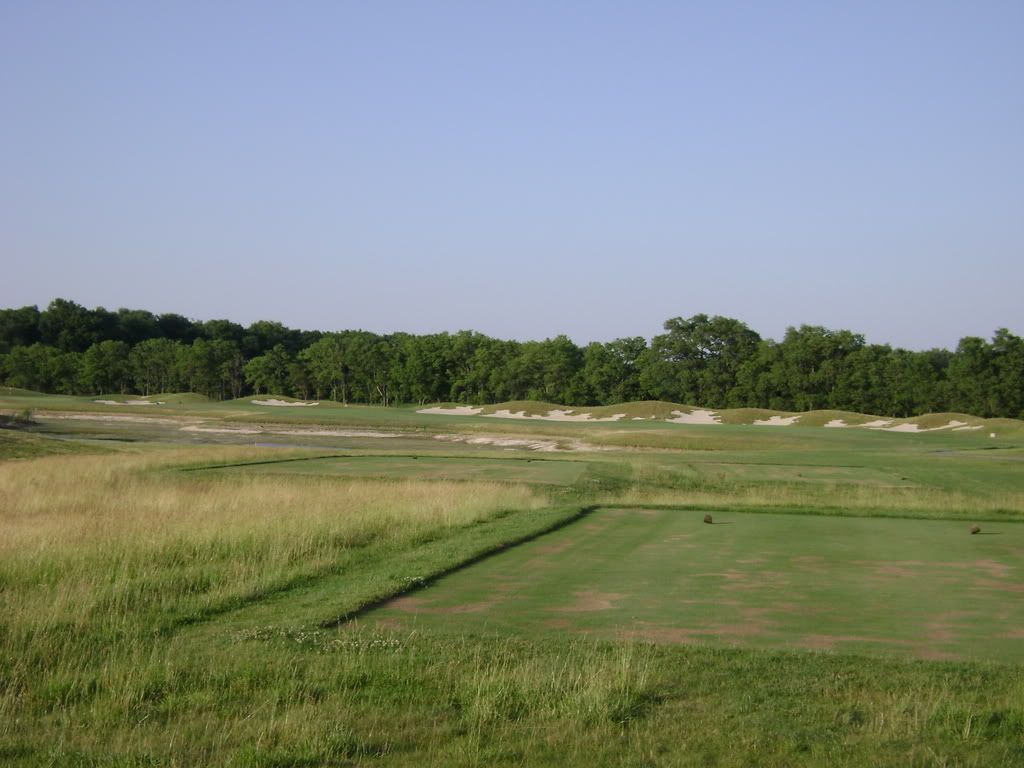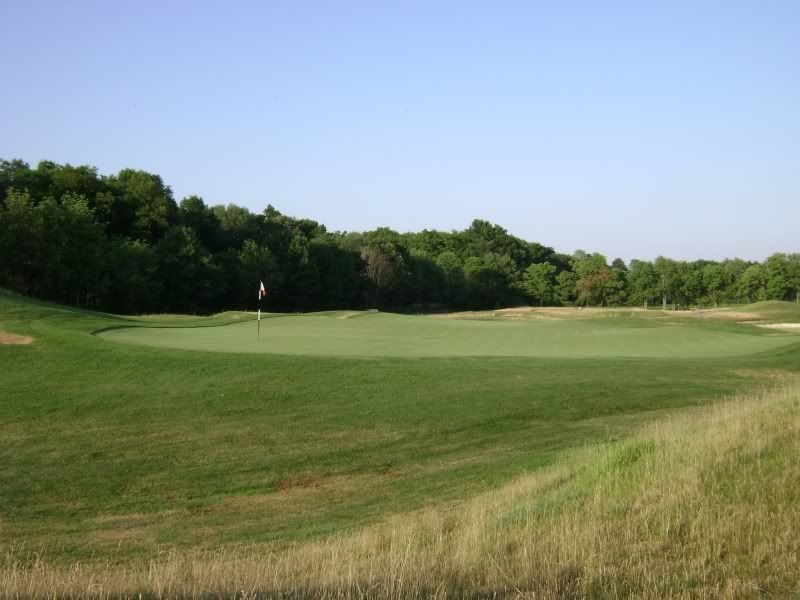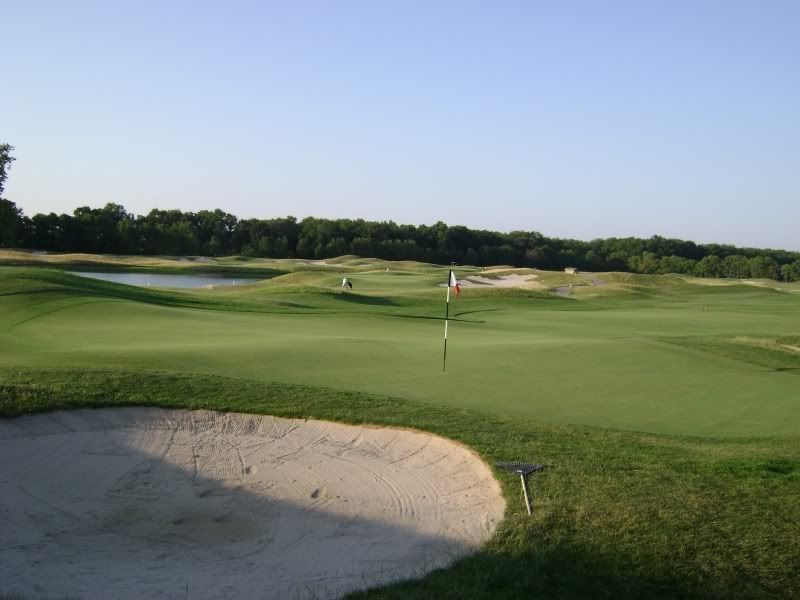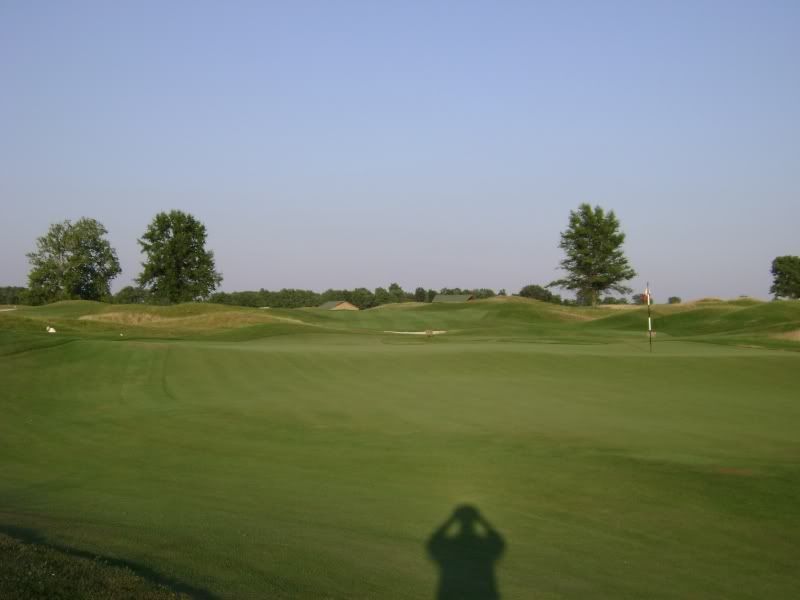Purgatory Golf Club
Noblesville, Indiana
Just north of Noblesville, Indiana is the Purgatory Golf Club. With over 125 bunkers and multiple ponds around the course, there are several places for the player to find punishment and peril. But this Ron Kern designed gem is about much more than penal golf. It is one of the true gems of the Indiana landscape and explosion of high-quality golf courses in the last fifteen years across the state.
The accolades for the course were received almost immediately as it was recognized as a great layout by publications like Golf Digest and Golf Week. The Merchant family opened the facility and hired Indiana native Ron Kern to layout the course. Kerns original idea was to develop the course based on solid links like features and the conceptual philosophies of famed architect Alister Mackenzie. Throughout the routing there are noticeable nods to the genius of Mackenzie.
Since the course was opened to the public there have been two things that have always been held against the layout. The first was the vast number of limestone sand filled bunkers that exist on the landscape. Kern laid out the lacy edged bunkers in a way similar to the style of Mackenzie as his fine courses at Cypress Point and the Valley Club. They not only use a similar style, but also many of the same strategic uses. The bunker hides the preferred lines of play on many of the holes and make for heroic carries on what is a somewhat boring landscape. Kern also mixes in his own philosophy with the bunkering by pinching in the fairways at certain locations. But more than adequate width still remains for the player that is less than a scratch.
The second major point of emphasis for the detractors is the creation of what are termed the Purgatory tees. The course can play up to a maximum distance of 7,754 yards with one hole playing at a whopping 741. But with six sets of tee boxes, the course is more than flexible and can accommodate any game. Some argue that the course is actually much more interesting from the white and blue tee boxes totaling 6,422 and 6,796 yards respectively. Even with all of this possible length around the course, the variety of the hole designs bring out the brilliance of the layout.
The look of Purgatory was also different that anything else seen to that point in Indiana golf. The wide-open course with only a few trees over a wind swept terrain was awe-inspiring. The use of the high fescue grass also added a wonderful visual element to the terrain that accentuated the contours of the landscape. The visual aspects of the terrain are also brought to the forefront by the wonderful conditioning and maintenance of the grounds. Since the opening of the course, the in-house crew has overseen some changes to the original layout, elimination of a pond short of the 11th green and elimination of the stream that bisected the 4th fairway.
Even with all of the overwhelming things about the conditioning, maintenance, hazards and wonderful scale, the best element of the golf course are the green complexes. On other Kern courses his complexes seemed to have similar qualities throughout. But his skill had truly evolved to the next level when given the chance to put together the greens at Purgatory. Perhaps Kern was channeling Alister Mackenzie when he laid them out, but it is unlikely that someone could find a more varied and challenging set in the state of Indiana. There are a few subtle putting surfaces for some to catch their breath, such as the second. But for the most part they are highly undulating velvet carpets that make for interesting approach shots and putts once aboard the dance floor. The greens at Purgatory used a combination of slope, contouring and run offs to provide interesting choices from around and on the green. Some of the more varied greens include the Redan style third, the front to back sloping eighth, the pimple protected eleventh and the three tiered seventh. The best green on the course may belong to the sixth though. It is clearly divided in three sections with a false front and bunkers protecting the entrance. The back right runs off into a chipping area and the rest of the green is divided into slight shelves with a subtle punchbowl on the back left side. The green was also designed to have a short iron or wedge hit into on a mid-length par four. It is an example of how the shot required and the target match perfectly. This is something that occurs on every hole at Purgatory.
Though the course at Purgatory sounds difficult, it is rewarding for those that play wisely from the tee. The experience though is among the best in Indiana and perhaps the top of any list in the state. But that does not mean you wont have to work to get around the course. No one gets through Purgatory without working through a few of his or her golfing transgressions.
Hole by hole
Hole 2 442 yards Recognized as one of the top 18 holes in the Indy area by a local website. Has a beautiful cape-style drive over a pond. The green is tucked tightly between a bunker and the water. The green is actually the least contoured on the course.
From the tee

Hole 3 173 yards A wonderful version of the Redan with only the entrance to the green visible from the tee. The green runs smoothly down from the front right to the back left. Pin locations on the front are nearly impossible, but the ones on the back left may be the easiest on the hole due to the green contouring. The beautiful bunker on the left side is to be avoided at all costs. My favorite par three on the course.
From behind the green

Hole 4 445 yards The narrowest driving hole on the course with the fairway running between trees and downhill over an area that used be a stream. The stream was eliminated but the beauty of the hole in the evening is almost unmatched on the course. The green is a wonderful complex with a deep catch basin on the right and contouring that goes away from any player that finds the area.
View left of the green with the large chipping area beside the green.

Hole 6 417 yards Perhaps the best mid-length hole on the course. The drive appears to run into a dead end as Kern has placed the bunkers to conceal the dogleg of the fairway from left to right. The approach is slightly uphill and into the prevailing breeze to the smallest green on the course. The green is also the most contoured. Three distinct sections exist with a chipping area behind. Two bunkers also protect the front of the green with a false front. Much more difficult than the yardage would have you believe.
The sixth green with the seventh green in the distance and the sixth fairway to the right.

Hole 8 481 yards The longest par four on the course is possibly my favorite. The tee shot is somewhat blind as the tee ball will more than likely clear the slight crest and roll down the hill. In a lot of ways it reminds me of the 13th at Crystal Downs. The second reinforces that feeling with the movement of the terrain down to the green complex. Two large bunkers protect the favored left side, but they stop well short of the green. The green is a favorite as well with it being two-tiered and the front being the higher level. Running beyond hole locations on the front creates a difficult come backer up the rise. The approach might be the toughest shot on the course.
View from behind the green showing the reversed two-tiered green.

Back nine on the next post.